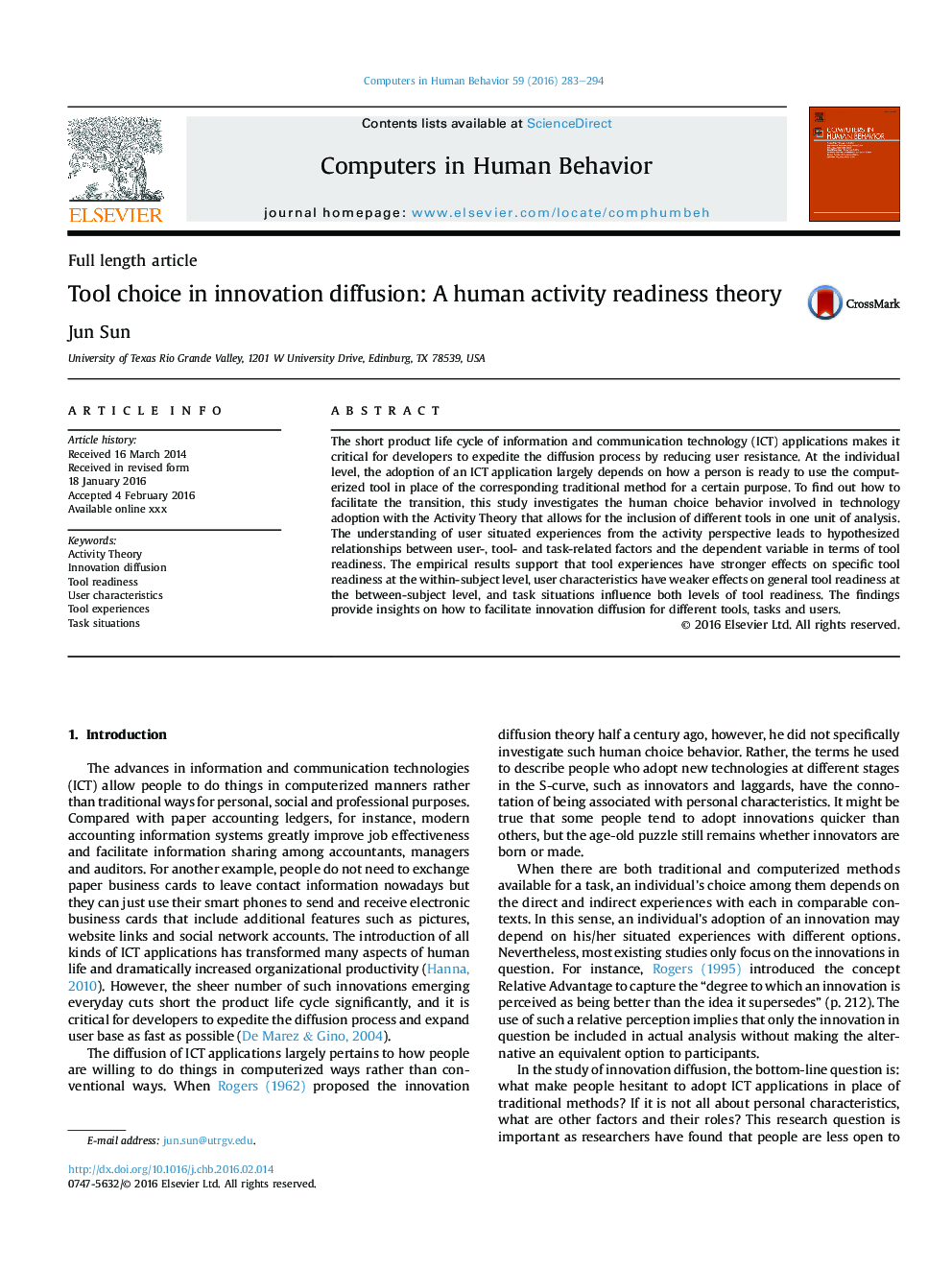| Article ID | Journal | Published Year | Pages | File Type |
|---|---|---|---|---|
| 6837446 | Computers in Human Behavior | 2016 | 12 Pages |
Abstract
The short product life cycle of information and communication technology (ICT) applications makes it critical for developers to expedite the diffusion process by reducing user resistance. At the individual level, the adoption of an ICT application largely depends on how a person is ready to use the computerized tool in place of the corresponding traditional method for a certain purpose. To find out how to facilitate the transition, this study investigates the human choice behavior involved in technology adoption with the Activity Theory that allows for the inclusion of different tools in one unit of analysis. The understanding of user situated experiences from the activity perspective leads to hypothesized relationships between user-, tool- and task-related factors and the dependent variable in terms of tool readiness. The empirical results support that tool experiences have stronger effects on specific tool readiness at the within-subject level, user characteristics have weaker effects on general tool readiness at the between-subject level, and task situations influence both levels of tool readiness. The findings provide insights on how to facilitate innovation diffusion for different tools, tasks and users.
Related Topics
Physical Sciences and Engineering
Computer Science
Computer Science Applications
Authors
Jun Sun,
